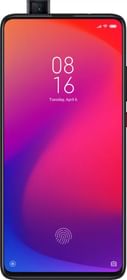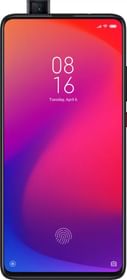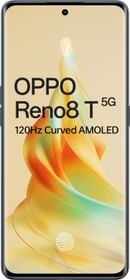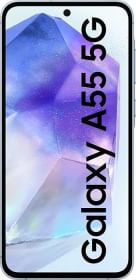Xiaomi’s Redmi-series has been the main pillar of Xiaomi rise from unknown to number one smartphone brand in India. In the price-sensitive market, Redmi smartphones managed to offer really aggressive specs within under Rs 20,000. This, however, has also limited the company as an affordable smartphone maker and as a result, the brand hasn’t managed to make many inroads in the higher-midrange and premium segment in the country. (Xiaomi Redmi K20 review हिंदी में पढ़िए)
“Teez hazar kharch karke bhi Redmi hi lena padega kya?” (why should I buy a Redmi if I am spending Rs. 30,000?) is a recurring statement that aptly describes the sentiment.
With the new K20-series, Xiaomi’s a pursuing a more aggressive outlook towards features rather than the price and is attempting to revamp its image in India.
Xiaomi has been very bullish about the Redmi K20 Pro from the start and went all out to promote it as the ‘flagship killers 2.0’ across online and offline platforms. However, post official launch in India, there has been a lot of ruckus about Redmi K20 Pro in regards to pricing. So much so that someone started a change.org petition asking Xiaomi India to revise the pricing, and Global VP Manu Jain had to step up to defend the company’s stance in an open letter.

What do we think about the Redmi K20 Pro? Is it really overpriced? Has Xiaomi managed to deliver another ace? How’s PUGB Mobile gaming experience on the Redmi K20 Pro? Let’s find answers to all these questions in our full review.
About this Redmi K20 Pro review: Initially, for a couple of weeks we tested a China imported variant after flashing global MIUI ROM. However, post K20 Pros official launch we ordered the K20 Pro retail unit from Flipkart to get a complete picture for this review.
Page Contents:
- Xiaomi Redmi K20 Pro Review: Box Contents
- Xiaomi Redmi K20 Pro Review: Design and Build
- Redmi K20 Pro Review: Display
- Xiaomi Redmi K20 Pro Review: Performance and Software
- Xiaomi Redmi K20 Pro Review: Camera Performance
- Redmi K20 Pro Review: Battery
- Xiaomi Redmi K20 Pro Review: Audio and Biometrics
- Xiaomi Redmi K20 Pro Review: Verdict with Pros and Cons
Xiaomi K20 Pro Price in India and Specification
| Specs | Redmi K20 Pro |
| Platform | Android 9 based MIUI 10 |
| Screen | 6.39-inch full HD+ AMOLED display, 19:5:9 aspect ratio |
| Biometrics | In-screen fingerprint (optical) |
| Processor | Snapdragon 855 |
| RAM | 6/8GB |
| Storage | 128/256GB |
| Main Rear Camera | 48MP (f/1.8) Sony IMX586 |
| Secondary Rear Camera | 13MP (f/2.4) |
| Additional Rear Cameras | 8MP (f/2.4) |
| Front Camera | 20MP (f/2.2) |
| Battery | 27W Quick Charge 4+ fast charging support |
| Redmi K20 Price In India | 6GB+128GB: Rs 27,999
8GB+256GB: Rs 30,999 |
Xiaomi K20 Pro Unboxing: What’s inside?
- Redmi K20 Pro/ Mi 9T Pro handset
- USB cable (Type-C)
- 18W Wall charger
- Sim ejector tool
- Hard plastic case
- Documentation
ALSO READ: Samsung Galaxy Note 10+ Review
Xiaomi Redmi K20 Pro Review: Design and Build
Last year when we reviewed the Poco F1(review), we concluded that it offered extraordinary value but had an uninspiring design. Well, Xiaomi seems to have taken a note of that. The Redmi K20 Pro design is fresh and seems well thought out.
The Redmi K20 Pro is offered in three hues: Carbon Black, Glacier Blue, and Flame Red. We have the Carbon Black variant with us which indeed looks and feels fantastic, especially if you compare it against the Poco F1. Post India launch we bought a Red color variant which also looks equally appealing (though a bit flashy). This new aura prism design brings most ardent gradient work that we have seen in the segment. Multi-layer elements help Xiaomi to achieve these striking effects.

The Redmi K20 Pro has a glass-metal construction where the front and rear glass are firmly held by a metal side rail. The 3D curved design attached with Gorilla Glass 5 layer, giving it a distinctive, more congenial look compared to the gradients we have seen on affordable phones in recent times.
There’s a triple rear camera module on the rear where the 48MP primary sensor is highlighted by an accent color ring. Thanks to tapered edges, the Redmi K20 Pro fits snugly in our palms. Unlike the Poco F1, the volume rocker and power button are both metallic, giving excellent tactile feedback. The Red accent on power key also adds to the K20’s overall appeal.

Front on, it’s just all display. There is no notch and the AMOLED screen is uninterrupted, just as on Asus 6Z (review). Where’s the selfie camera you may ask? Well, same as the OnePlus 7 Pro (review) and Vivo V15 Pro (review), the Redmi K20 Pro also uses a motorized pop-up module to accommodate the selfie camera.
Xiaomi engineers did some creative thinking and placed LED lights on the right and left edges of the selfie camera module. If you ask us, this looks a bit immature. There’s also music playback associated with the pop-up camera, but thankfully you can turn both audio and visual effects off.

It is also worth pointing out that the Redmi K20 Pro pop-up mechanics feel a little lethargic in comparison to some of its adversaries. The notification light also finds a place on the top surface of the pop-up module, and that’s perhaps the worst place to put it.

As for build quality, there are no flexes or creaks in the body. The Gorilla Glass 5 protection on front and rear is also a confidence booster. The handset is not water-resistant certified, but there is p2i nanocoating for splash resistance. Xiaomi bundles a rubberized texture case in the box, which is worth appreciating.

If I had to nitpick, the Redmi K20 Pro’s glossy design catches finger smudges rather easily. At 190 grams it is on the heavier side (still it is more manageable than the OnePlus 7 Pro). And if you are upgrading from other Redmi phones, you might miss the IR blaster on K20 Pro.
ALSO READ: Samsung Galaxy S10 Lite Review
Xiaomi Redmi K20 Pro Review: Display
Xiaomi has notched its game up as compared to the Poco F1 from last year. The edge-to-edge 6.39-inch Super AMOLED screen has about 86 percent screen-to-body ratio and is so much better than what Xiaomi’s previous flagships in the country offered.

The screen has native full HD+ resolution with 19.5:9 aspect ratio. Being an AMOLED panel it theoretically offers infinite contrast which means the dark mode looks appealing on the phone. Xiaomi has also introduced Always On feature that it terms Ambient Display. The user can schedule it to turn on/off or continuously keep it on.
The screen is bright, vivid and as sharp as the best available options in the segment. We tested the panel under direct Sun and it was comfortably legible. The K20 Pro display also supports HDR content and DC Dimming. It comes with Widevine L1 certification and has been whitelisted by Netflix and Prime Video for HDR content streaming as well. Also, the MIUI 10 has controls to adjust contrast and colors tones under display settings.
ALSO READ: Vivo S1 Review
Redmi K20 Pro Review: Performance and Software
Performance-wise there is hardly anything to complain about with the Redmi K20 Pro. For anyone who doesn’t know, the 7nm process-based Snapdragon 855 that drives the handset is currently the best Qualcomm chipset and has a tri-cluster architecture. There is one extreme performance cores clocked at 2.84GHz followed by a couple of performance cores ticking at 2.41GHz, and four most power-efficient cores at 1.78GHz.

The combination of best of Qualcomm SoC, up to 8GB of RAM and fast UFS 2.1 storage (up to 256GB) makes it snappy and capable of handling every app or game I’ve tried convincingly.

Xiaomi has added a gaming mode that enables special features like enhanced touch response in-game night-time visibility and more.
While I was using the K20 Pro as my daily driver, it responded well to almost everything. The UI felt responsive and apps loaded without any hitch. Xiaomi claims that there is a custom graphene cooling tech that can keep the system cool by 8°C with extended heavy usage.
Redmi K20 Pro Benchmarks
| Benchmark Standard | Score |
| Antutu | 369596 |
| Geekbench Score Single-Core / Multi-Core | 3028 / 10464 |
| 3D Mark Sling Shot Extreme – Vulkan | 3965 |
Playing PUGB Mobile with HDR quality and extreme fame rate graphic settings on the Mi K20 Pro was a great experience and we didn’t experience any throttling in performance. In the controlled room temperature, the phone did get warm touching 40C in certain spots within 15 minutes of gameplay. However, the temperature doesn’t go beyond that.
As far as performance hardware goes, the OnePlus 7 will have the slight advantage of UFS 3.1 that should be noticeable only while transferring or installing large files.

As for the software, it is based on Xiaomi’s latest MIUI 10 which is a heavily customized version of Android 9 Pie. It has been further enriched with Poco launcher, dark mode, navigation gestures, lots of animation, Picture-In-Picture mode and autofill support. The good thing is that Xiaomi has the Redmi K20 Pro under the radar for Android Q update.
In our retail unit, we faced some software issues while answering calls.
ALSO READ: Samsung Galaxy M40 Review | Samsung Galaxy A51 Review
Redmi K20 Camera Review
The Redmi K20 Pro camera is pretty loaded on paper. Conforming to modern flagship trends, it brandishes triple rear sensors. Out of the three, there is a 48MP (f/1.75) IMX586 primary sensor, teamed with a 13MP (f/2.4) ultra-wide one and an 8MP (f/2.4) telephoto lens. For selfies, there is a 20MP selfie camera that pops every time you need it.

The 48MP primary camera is the same one that Xiaomi employs on its Redmi Note 7 Pro (review). The primary camera essentially will act as a 12MP sensor with very large 1.6µm size pixels. There is a dedicated 48MP mode as well, just in case you need to print a billboard.
There is no optical image stabilization (OIS) or any form of electronic stabilization for the cameras. Now let’s see some of the camera samples we took with the Redmi K20 Pro cameras:








The Redmi K20 Pro camera manages to capture good pictures in most conditions. It has a decent dynamic range but in harsh light, the highlights tend to blow up slightly.
One thing that I have noticed in my time with the phone is that some of the photos don’t have the same crispness as others. Low light camera performance is average and not far from the likes of OnePlus 7 and Asus 6Z. For better low light photos, the night mode in the default camera app is recommended as it outputs balanced images. However, you have to hold the phone with steady hands. As for videos, it can record 4K videos at 60FPS, but again, lack of OIS means you will have to keep the phone really stable.
ALSO READ: Poco X2 Review
Xiaomi Redmi K20 Pro Battery Life
The Xiaomi Redmi K20 Pro draws power from a 4,000 mAh battery. With normal day-to-day usage, it lasts through a day without breaking a sweat. With more demanding use, the battery depletes fast. Overall, we are happy with the mileage we are getting. The phone supports Quick Charge 4+ out of the box which means it can handle much faster charging.
However, Xiaomi ships it with only an 18W charger. There aren’t many QC 4.0 chargers available in case you wish to buy one separately. Currently, the best fast charging option for Redmi K20 Pro will be the 27W sonic charger that Xiaomi launched in India recently for Rs 999. Wireless charging fans will be disappointed with Xiaomi.
ALSO READ: Samsung Galaxy S10 Lite Review
Xiaomi Redmi K20 Pro Audio and Biometrics
The Redmi K20 Pro audio output is about average. The phone has a bottom-firing mono speaker which is loud enough, but not the best in its class. The good thing is it retains the 3.5mm headphone jack.

The K20 Pro has both face unlock and more secure fingerprint scanner. The slower pop-up mechanism means the face unlock isn’t as seamless. The seventh-generation in-display optical scanner works well. It is as fast as the best available optical sensors on the market.
Redmi K20 Pro Review Verdict
The Redmi K20 Pro screams value from every nook and corner and is one phone that can be seen as a successor to the Poco F1. The handset offers brains and muscle of Snapdragon 855 SoC, a gorgeous AMOLED display with HDR support, and a decent battery mileage. The camera isn’t perfect but should be apt for a phone with an under Rs. 30,000 price tag.
We wouldn’t say that the K20 Pro, or even the K20, is overpriced in India. In fact, the price is still the biggest advantage the K20 Pro has over phones like OnePlus 7 and Asus 6Z that also offer a wonderful experience and the latest Qualcomm chipset.
That said, the K20 Pro is still an affordable flagship, and Xiaomi is cutting a few corners. If buyers keep their expectations realistic, they would be really happy with the value they get for their money.
Pros
- Performance
- Design and build
- Battery mileage
- Retains 3.5mm audio jack
Cons
- Average haptic motor
- No IR blaster
- No OIS
Quick Bytes: Redmi K20 Pro questions and answers
The biggest concern about Xiaomi phones has been the system level ads in MIUI. The company has confirmed that Xiaomi won’t serve such ads on k20-series phones in India. However, some of the pre-installed apps and Xiaomi’s own system apps still push spam notifications.
Xiaomi first launched the Redmi K20 Pro in China. However, for the European market, Xiaomi chose to rename it as Mi 9T. So yes, the Xiaomi Mi 9T and Redmi K20 Pro are both the same phones.
No, Xiaomi doesn’t include an IR Blaster in its Redmi K20 Pro.
The Redmi K20 uses selfie camera for face unlock. However, the face unlock is not as secure as a fingerprint sensor or as iPhone’s Face ID.
The Redmi K20 Pro is a really aggressively specced phone with performance assurance of class-leading Snapdragon 855. In fact, as of now, it is the cheapest Snapdragon 855 based smartphone in the market. The phone offers good value for money and is definitely a worthy buy.
































Hello, I’m K20 Pro user ..this phone is excellent..but please fix one issue .. this was possible by going to settings > special features > Second space > Move data (from the second space). There you could transfer photos and files between spaces.(After Update Android 11) Now it’s only possible contacts, messages and apps..so fix this please